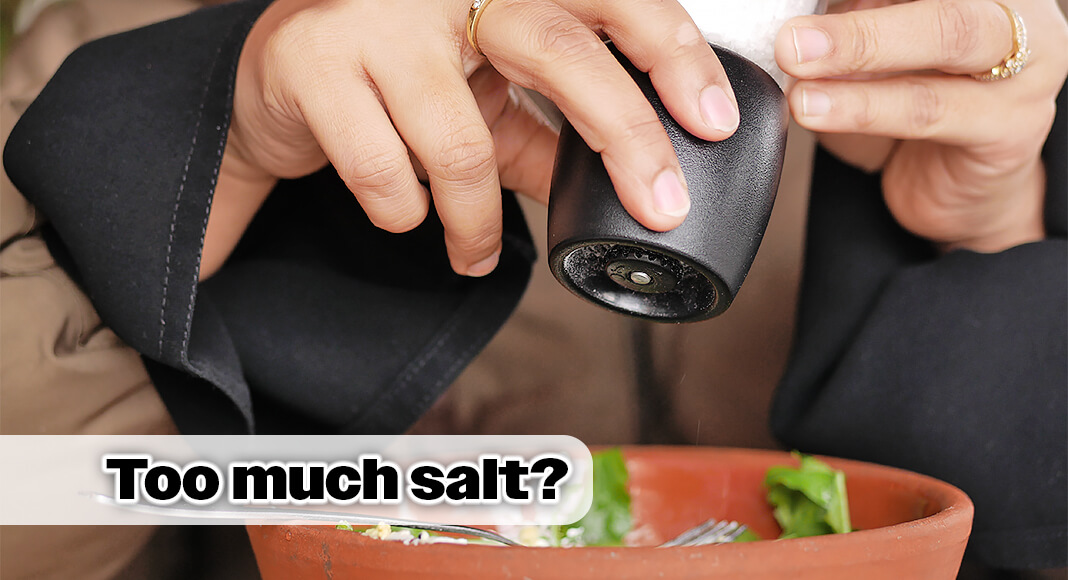
Mega Doctor News
By American Heart Association News
It’s no secret that adults in the U.S. consume more sodium on a daily basis than what’s recommended – often through prepared foods, such as pizza, cold cuts, canned soup and bread. But sodium intake patterns can vary by race and ethnicity, suggesting a need for culturally tailored advice, according to new research.
On average, an adult in the U.S. consumes about 3,400 milligrams of sodium each day. That’s significantly more than the maximum 2,300 mg – about a teaspoon of table salt – recommended by federal dietary guidelines and the American Heart Association.
Excess sodium consumption can increase the risk of high blood pressure, a major risk factor for heart disease and stroke. For adults with high blood pressure, the American Heart Association says the ideal daily limit of sodium is 1,500 mg.
“High sodium intake can even affect non-heart-related diseases like kidney disease,” lead study author Dr. Jessica Cheng said in a news release. Cheng is a postdoctoral research fellow in epidemiology at the Harvard T.H. Chan School of Public Health in Boston.
Cheng and her team used National Health and Nutrition Examination Survey data collected from 2017 to March 2020 to analyze differences in sodium intake by race and ethnicity. Their findings were published May 28 in the Journal of the American Heart Association.
The roughly 8,000 survey participants self-reported what they ate in the previous 24-hour period, as well as the type and frequency of salt used in cooking and at the table.
Pizza, soup and whole pieces of chicken ranked among the main sources of sodium regardless of the participant’s race and ethnicity, researchers found.
Tacos, burritos and Mexican mixed dishes – which Cheng said included enchiladas, tamales and chiles rellenos (stuffed peppers) – were among top sources of sodium for Mexican American adults.
For Black adults, chicken patties, nuggets and tenders were a unique source of sodium. For white participants, the main sources were cold cuts and cured meats, cheese and mixed meat dishes.
Among Asian American adults, four culturally unique foods made up more than 14% of their daily sodium consumption: soy-based condiments; fish; fried rice and lo/chow mein; and stir-fry/soy-based sauce mixtures.
About two-thirds of Black participants reported making an attempt to reduce their sodium intake, more than any of the other groups. They also had the highest rate of being advised by a doctor to lower their sodium consumption.
The study also found that Asian American adults were most likely to use salt while cooking, but they were least likely to use it at the table.
Cheng and her team also examined an assumption within the NHANES database that rice is salted. Changing that assumption to unsalted had little effect for most groups in the study. However, it reduced the daily sodium intake of Asian American adults by nearly 325 mg.
Cheng said sodium intake among Asian Americans may have been overestimated because it was assumed salt was added to rice. That assumption led to research that showed Asian Americans have the highest sodium intake of all racial and ethnic groups. However, “culturally, not all Asians salt plain rice. If they don’t add salt to rice when cooking, then their sodium intake is among the lowest across all racial and ethnic groups.”
Dr. Stephen P. Juraschek said the new study raises awareness of how sodium is introduced across cultural groups in the U.S. “Such knowledge is critical for health professionals counseling patients on how they can reduce sodium in their lives and within their families,” said Juraschek, an associate professor of medicine at Harvard Medical School and an associate professor of nutrition at Harvard T.H. Chan School of Public Health. He was not involved in the research.
Efforts to target sodium reduction “should account for differences among groups and tailor to patients’ unique needs,” he said in the news release.
Cheng agreed. “Researchers, health care professionals and policymakers should help people understand the sodium content in packaged foods, restaurant meals, home cooking and table salt while suggesting methods to cut their salt intake,” Cheng said.
Reducing sodium intake by just 1,000 mg daily can improve your blood pressure and overall heart health, the American Heart Association says.
And lowering sodium intake doesn’t have to be difficult, Cheng said. Either use a salt substitute or just vary your diet and add more potassium-rich foods such as vegetables, which can also help reduce blood pressure, she said. “You don’t have to avoid pizza completely; eat it less often or try making it at home with low-sodium cheese, dough and tomato sauce you make from scratch.”










